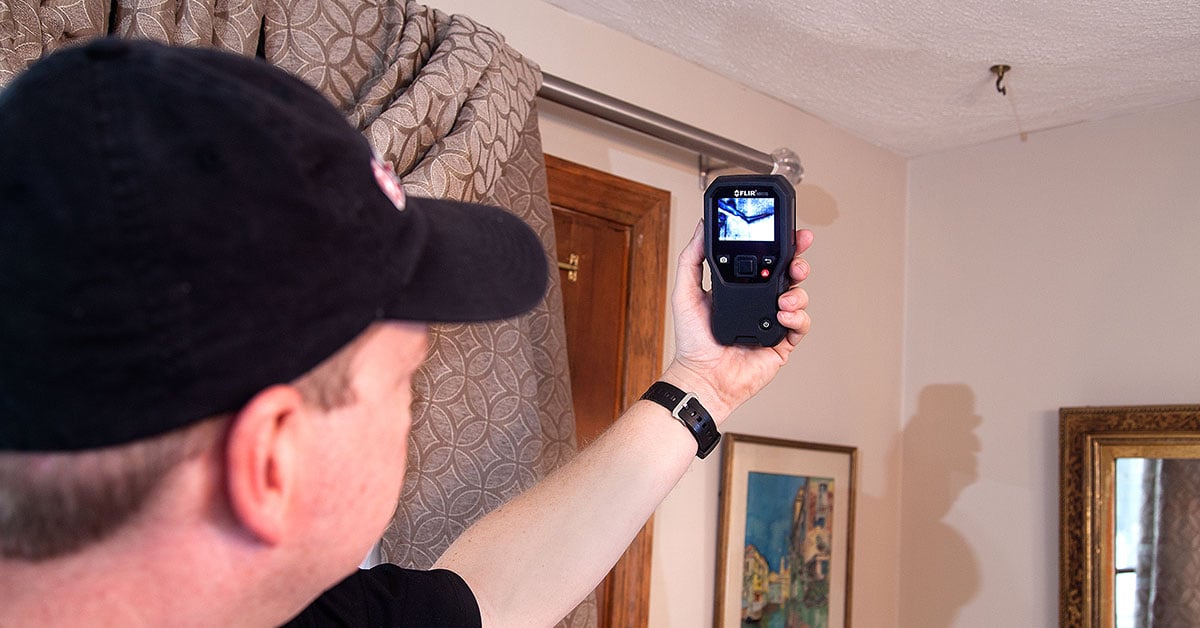Unearthing Secret Water Line Leaks: 6 Effective Techniques
Unearthing Secret Water Line Leaks: 6 Effective Techniques
Blog Article
Nearly everybody has got their unique opinion on the subject of Detecting hidden plumbing leaks.

Early detection of leaking water lines can alleviate a potential catastrophe. Some little water leakages might not be noticeable.
1. Take A Look At the Water Meter
Every home has a water meter. Inspecting it is a guaranteed manner in which assists you discover leaks. For beginners, turn off all the water resources. Ensure no person will certainly flush, use the tap, shower, run the washing device or dishwashing machine. From there, go to the meter as well as watch if it will certainly alter. Considering that nobody is using it, there need to be no movements. That suggests a fast-moving leak if it relocates. Also, if you detect no changes, wait an hour or more as well as inspect back once more. This indicates you might have a slow leak that could also be below ground.
2. Examine Water Intake
Assess your water bills and also track your water consumption. As the one paying it, you should observe if there are any type of disparities. If you identify sudden changes, in spite of your consumption coinciding, it implies that you have leaks in your plumbing system. Keep in mind, your water costs need to fall under the very same array each month. An abrupt spike in your bill indicates a fast-moving leak.
At the same time, a stable increase monthly, despite having the exact same habits, shows you have a sluggish leakage that's also gradually rising. Call a plumber to completely inspect your home, especially if you feel a cozy location on your floor with piping underneath.
3. Do a Food Coloring Examination
When it pertains to water usage, 30% comes from bathrooms. Examination to see if they are running appropriately. Decline specks of food shade in the storage tank and wait 10 mins. There's a leak in between the storage tank and also bowl if the color somehow infiltrates your bowl throughout that time without flushing.
4. Asses Exterior Lines
Do not fail to remember to examine your exterior water lines also. Should water seep out of the connection, you have a loose rubber gasket. One tiny leak can waste lots of water as well as surge your water costs.
5. Examine and Analyze the Scenario
House owners must make it a routine to check under the sink counters and even inside closets for any type of bad odor or mold and mildew development. These 2 red flags show a leak so punctual interest is called for. Doing regular examinations, even bi-annually, can save you from a significant trouble.
Examine for discolorations and also deteriorating as many devices as well as pipelines have a life expectancy. If you believe leaking water lines in your plumbing system, do not wait for it to escalate.
Early discovery of dripping water lines can mitigate a possible disaster. Some small water leakages may not be visible. Checking it is a guaranteed way that aids you discover leakages. One small leak can throw away heaps of water and also increase your water costs.
If you think dripping water lines in your plumbing system, do not wait for it to escalate.
WARNING SIGNS OF WATER LEAKAGE BEHIND THE WALL
PERSISTENT MUSTY ODORS
As water slowly drips from a leaky pipe inside the wall, flooring and sheetrock stay damp and develop an odor similar to wet cardboard. It generates a musty smell that can help you find hidden leaks.
MOLD IN UNUSUAL AREAS
Mold usually grows in wet areas like kitchens, baths and laundry rooms. If you spot the stuff on walls or baseboards in other rooms of the house, it’s a good indicator of undetected water leaks.
STAINS THAT GROW
When mold thrives around a leaky pipe, it sometimes takes hold on the inside surface of the affected wall. A growing stain on otherwise clean sheetrock is often your sign of a hidden plumbing problem.
PEELING OR BUBBLING WALLPAPER / PAINT
This clue is easy to miss in rooms that don’t get much use. When you see wallpaper separating along seams or paint bubbling or flaking off the wall, blame sheetrock that stays wet because of an undetected leak.
BUCKLED CEILINGS AND STAINED FLOORS
If ceilings or floors in bathrooms, kitchens or laundry areas develop structural problems, don’t rule out constant damp inside the walls. Wet sheetrock can affect adjacent framing, flooring and ceilings.
https://www.servicemasterbyzaba.com/blog/how-to-detect-water-leakage-in-walls/

Do you like reading up on Hacks to detect leaks? Post a remark further down. We'd be pleased to know your suggestions about this review. In hopes that you visit us again soon. In case you appreciated our blog entry please do not forget to share it. Kudos for your time. Visit us again soon.
Always ready, contact! Report this page